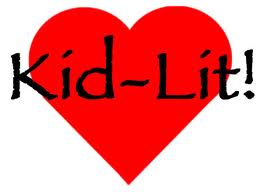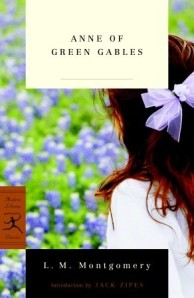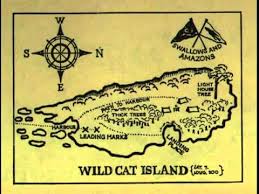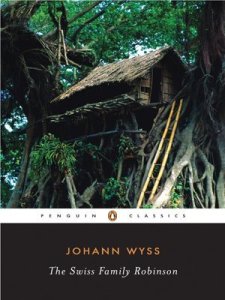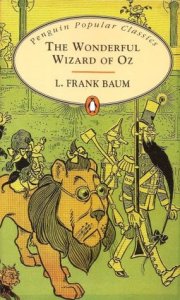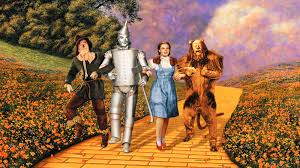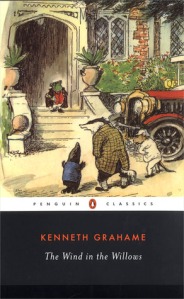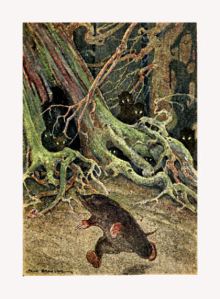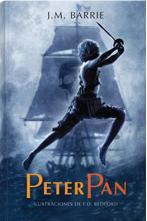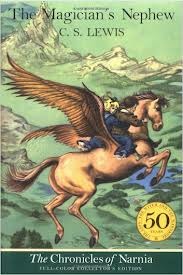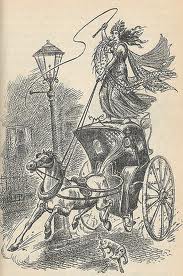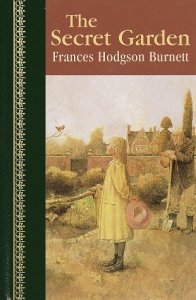
What’s it all about?:
What secrets lie behind the doors at Misselthwaite Manor? Recently arrived at her uncle’s estate, orphaned Mary Lennox is spoiled, sickly, and certain she won’t enjoy living there. Then she discovers the arched doorway into an overgrown garden, shut up since the death of her aunt ten years earlier. Mary soon begins transforming it into a thing of beauty–unaware that she is changing too. But Misselthwaite hides another secret, as Mary discovers one night. High in a dark room, away from the rest of the house, lies her young cousin, Colin, who believes he is an incurable invalid, destined to die young. His tantrums are so frightful, no one can reason with him. If only, Mary hopes, she can get Colin to love the secret garden as much as she does, its magic will work wonders on him.
What did I think?:
The Secret Garden is the last title in the Kid-Lit Challenge for 2014 and I am so pleased that it was picked, I know it’s also a big favourite of Chrissi’s. I was slightly concerned as always, that re-reading it as an adult would dampen some of its charm but luckily that was definitely not the case! Our main character is Mary Lennox, a ten year old girl whom when we meet her is living in India with her mother and a host of servants including her personal Ayah who she treats abominably. For Mary is selfish, spoilt and used to getting her own way and when she doesn’t – well, the people around her certainly know about it. Even playing with other children in the area fares no better as Mary is equally rotten to them causing them to tease and name her “Mistress Mary, quite contrary.” Then a bout of cholera sweeps over the household, taking the servants and Mary’s mother with it, leaving her forgotten about and orphaned in her rooms until someone happens upon her (in quite a tantrum for having being left alone) and sends her to her uncle’s home in England.
Mr Craven of Misselthwaite Manor in Yorkshire is a peculiar character and one Mary feels slightly wary of as she is told by the housekeeper, Mrs Medlock, that he is not to be disturbed and quite frankly, is not really bothered about her being in his keep. Therefore, she is to amuse herself. But with no access to books, toys, etc and finding out from the servant Martha who sweeps her fire each morning that she is to dress herself (horror upon horrors), the only thing to do is to get out in the fresh air and wander through the gardens of the property. There she comes into contact with Ben Weatherstaff, the surly yet lovable head gardener and it is through him that she makes her first friend, a wonderful little robin. This robin has no fear of the old gardener and to Mary’s delight, often alights at his feet while Ben talks to it as if it were you or me in his broad Yorkshire accent. Through Ben and Martha, whose chatter she comes to quite enjoy, she learns the sad story behind Misselthwaite Manor. The mistress of the house, Mrs Craven, died while quite young and since then Mr Craven has never been the same, caught up in grief and often confining himself to his rooms. She once had a glorious garden, but when she died, Mr Craven angrily locked the door and buried the key so no one else could enjoy it. Mary finds herself caught up with the romance and sadness of the story and one morning, while chattering away to her new robin friend, he begins digging in the earth close to a wall in which she is certain lies the forgotten garden. Lo and behold, he uncovers the key and Mary is able to enter the “secret” garden for the first time.
Mary doesn’t know a whole lot about gardening but is desperate to do something with her little secret haven so confides in Martha that she would quite like to learn a bit about gardens and how to keep them. Martha is pleased that a transformation of sorts seems to be happening with Mary and that she no longer seems so surly or mean-faced so she introduces her to her brother Dickon, who knows everything there is to know about how things grow. Dickon is a fascinating character and although Mary has never had a friend in her life, the two like each other instantly and revel in the joy of their secret garden. Dickon teaches Mary how to plant and grow seeds and seems to be a regular Dr Doolittle with an animal friend constantly in tow, including a crow, two squirrels, a fox cub and a newborn lamb. This isn’t the end of the story however, we still have an interesting character to meet. After Mary hears crying in the night and is fobbed off by the staff whom she knows to be hiding something, she happens upon a boy lying in bed. It turns out he is Colin, son of her uncle, whom when born was weak and seemed destined to be a cripple or a hunchback. He keeps to his bed, constantly fearing a lump appearing upon his back with frequent hysterical and demanding fits, determined that he is not long for this world. It is only with Mary and Dickon’s help and the magic of the secret garden that he is able to appreciate life once more. As a result, his father Mr Craven also may once again know the joy that he has missed.
This is a beautiful story by Frances Hodgson Burnett and definitely one of my favourite children’s classics. It was wonderful to find out that it has stood the test of time and I think children today would still enjoy either reading it themselves or listening to it being read. The main character Mary goes on quite a dramatic journey as a person and it was lovely to see her transformation from a blatantly horrible little creature to an enthusiastic, passionate, kind and giving child as the book nears its end. I also enjoyed that it had its morals and messages but they were fairly subtle rather than being pushed or preached to as you can sometimes find in certain classic novels. And who doesn’t love a story with animals in? The addition of the friendly robin, crow, fox etc was a great touch by the author and one in which I think would appeal to many children. Basically, I can’t find much wrong with this timeless children’s story and I’m even now looking forward to when I decide to re-read it again!
For Chrissi’s fab review, please see her blog HERE.
Would I recommend it?:
But of course!
Star rating (out of 5):

Look out for Beth and Chrissi do Kid-Lit in 2015, titles to be revealed tomorrow!
